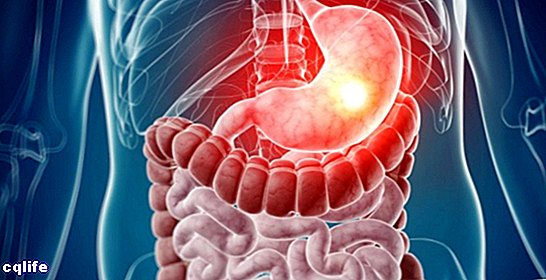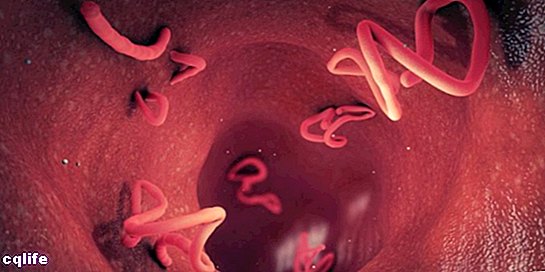- What is the digestive system?
- Functions of the digestive system
- Organs of the digestive system
- Digestive system diseases
We explain what the digestive system is, its functions and organs that compose it. In addition, the most common diseases of this one.

What is the digestive system?
The digestive system is known as the set of organs that are responsible for the digestive process, that is, the transformation of the food so that they can be absorbed and used by all cells of the organism. Besides of human being, most of the animals Superiors have a digestive system that performs this function.
During digestion or digestive process, the different types of nutrients found in the food consumed (carbohydrates, lipids Y protein) are transformed into simpler units, thanks to the different enzymes digestive. Under these conditions, the most elementary usable parts of the nutrients can be absorbed and then transported by the blood to all the cells of the body, where they are used to obtain Energy and carry out all the essential functions for the support and development of the life.
The functional process of the digestive system includes all the events that take place, from the entrance of the meal to the mouth, until the expulsion of feces (indigestible remains) through the anus, through the absorption of nutrients through the intestinal walls. It is a long process, which involves a set of complex mechanisms, involving many organs and parts of the body and which is essential for life, since human beings (like all animals) are heterotrophs, and therefore we can only incorporate the organic material we need through the feeding.
Functions of the digestive system
The digestive system fulfills several functions, but the main ones are four: food transportation, secretion of digestive juices, nutrient absorption Y excretion of feces.
- Food transportation. Food enters the mouth, where it is crushed by the teeth and moistened by saliva, and becomes the bolus, which is pushed into the esophagus with the help of the tongue. Then through the movements Peristaltic (a type of contraction and relaxation muscle movement), food continues to move through the digestive tract, through the stomach, and then into the intestines.
- Secretion of digestive juices. Throughout the digestive tract, food receives secretions from different organs, which allow its chemical digestion. In the mouth, the salivary glands secrete an enzyme that begins the transformation of sugars. The chemical digestion process continues in the stomach (thanks to the presence of gastric juices secreted there) and in the first portion of the small intestine (duodenum), where partially digested food is subjected to the action of bile and intestinal juices. and pancreatic. The enzymes and other substances present in all digestive juices allow food to be completely digested chemically, that is, to be reduced to its minimum usable units.
- Nutrient absorption. Once the food is digested (reduced to its simplest forms), the nutrients are absorbed in the small intestine, then passing into the blood to be distributed throughout the body. For its part, water and some salts are absorbed in the large intestine.
- Egestion of stool. Once the nutrients are extracted from the food, it is necessary to expel the waste material (the indigestible remains that were not used) out of the body, which is done through the end of the digestive tract.
Organs of the digestive system
The digestive system is made up of the digestive tract (which begins in the mouth and ends in the anus and measures about eleven meters) and the adjoining glands (salivary glands, liver and pancreas). Next, let's see what are the organs that are part of this apparatus and the functions they perform.
- Mouth and salivary glands. The mouth or oral cavity is the place where food enters the body. This organ contains distinct structures, such as the teeth (which allow chewing) and the tongue (which makes swallowing easier). In addition, in the mouth are the salivary glands that produce and secrete saliva. This secretion has multiple functions: it moistens the food and also contains enzymes (which start chemical digestion) and bactericidal substances.
- Pharynx. It is a tube-shaped structure, which is part of both the digestive system and the respiratory: connects the mouth with the esophagus (allowing food to pass through the digestive tract) and the nostrils with the larynx (allowing the air into the lungs). The pharynx has a structure called the epiglottis, which acts as a valve separating the digestive and respiratory tracts.
- Esophagus. It is a muscular tube, which carries food from the mouth to the stomach, through the neck, thorax and abdomen, and passes through a hole in the diaphragm.
- Stomach. Food accumulates in this organ. The cells that make up the stomach secrete gastric juices, composed primarily of pepsinogen, an enzyme precursor, and hydrochloric acid (HCl). This substance gives acidity to the environment allowing the activation of pepsinogen in pepsin (digestive enzyme that degrades proteins) and also functions as a bactericide. The inner walls of the stomach are lined with a mucosa that protects them from the action of acid.
- Small intestine. This first portion of the intestine, which measures between 6 and 7 meters in length, begins in the duodenum and reaches the ileocecal valve, where it joins the large intestine. The small intestine is full of villi and is the place where food is finished digesting and nutrient absorption occurs. This body is divided into two parts. The first portion is the duodenum, which measures between 25-30 cm, which is where the secretion of intestinal juice occurs and secretions from the pancreas and liver are received. The second portion is the jejunum-ileum, where the absorption of nutrients occurs once they have been digested.
- Large intestine. It is the rest of the intestine, which culminates in the rectum and measures between 120 and 160 cm in length. This organ fulfills several very important functions for the body: it is where feces are formed, but it is also the portion of the digestive system where the Water and the salts. In addition, the large intestine is a natural habitat for bacteria that synthesize vitamins necessary for the body.
- Pancreas. This gland is in contact with the intestine and spills its pancreatic juice into the duodenum, which contains different enzymes essential for digestion. On the other hand, the pancreas also synthesizes and releases into the blood hormones that regulate the metabolism of sugars, such as insulin, which allows the entry of glucose into the cells.
- Liver and gallbladder. The liver is the largest organ in the body (it weighs a kilo and a half) and has multiple and varied functions. This organ produces bile, a substance necessary for the digestion and absorption of fats (allows their emulsification). Bile collects in the gallbladder and from there it passes into the duodenum.
- Year. The anal opening is where feces or fecal matter is expelled out of the human body, through controlled movements of the anal sphincter.
Digestive system diseases

There are various diseases of the digestive system. Some of the main and most frequent are:
- Infections Product of the entry into the intestine of bacteria or virus that come from contaminated water or food. They can cause diarrhea, bloody stools or rectal mucus, as well as severe intestinal pain.
- Parasites Intestinal parasites are common in populations rural areas or people living in a situation of poverty and they are transmitted through contaminated food or water. The parasites can then migrate to other regions of the body and perpetuate the cycle if there is no proper elimination of feces.
- Indigestion. The consumption of food in bad condition or contaminated with toxic or harmful substances can generate an intestinal reaction very similar to allergic reactions, with colic and usually diarrhea.
- Gastritis and ulcers. The action of gastric juices and the constant consumption of irritants (alcohol, cigarettes, citrus fruits, etc.) can lead to redness and inflammation of the stomach lining (gastritis) and, in more severe cases, to ulcers and internal sores.
- Cancer. Cancer of the duodenum, colon, liver or pancreas are known and aggressive forms of malignant tumors, associated with certain eating habits and that also have a high hereditary component.
